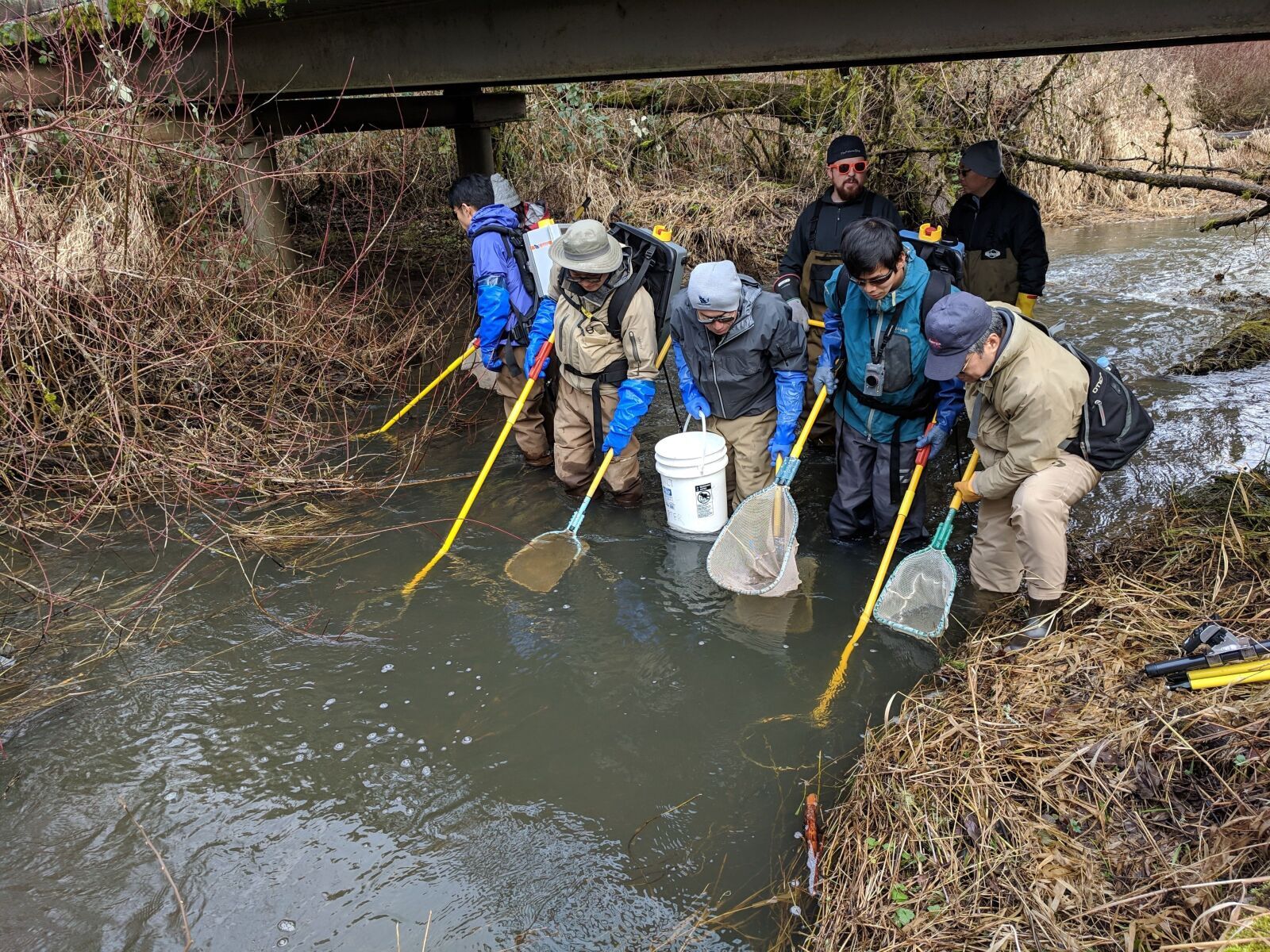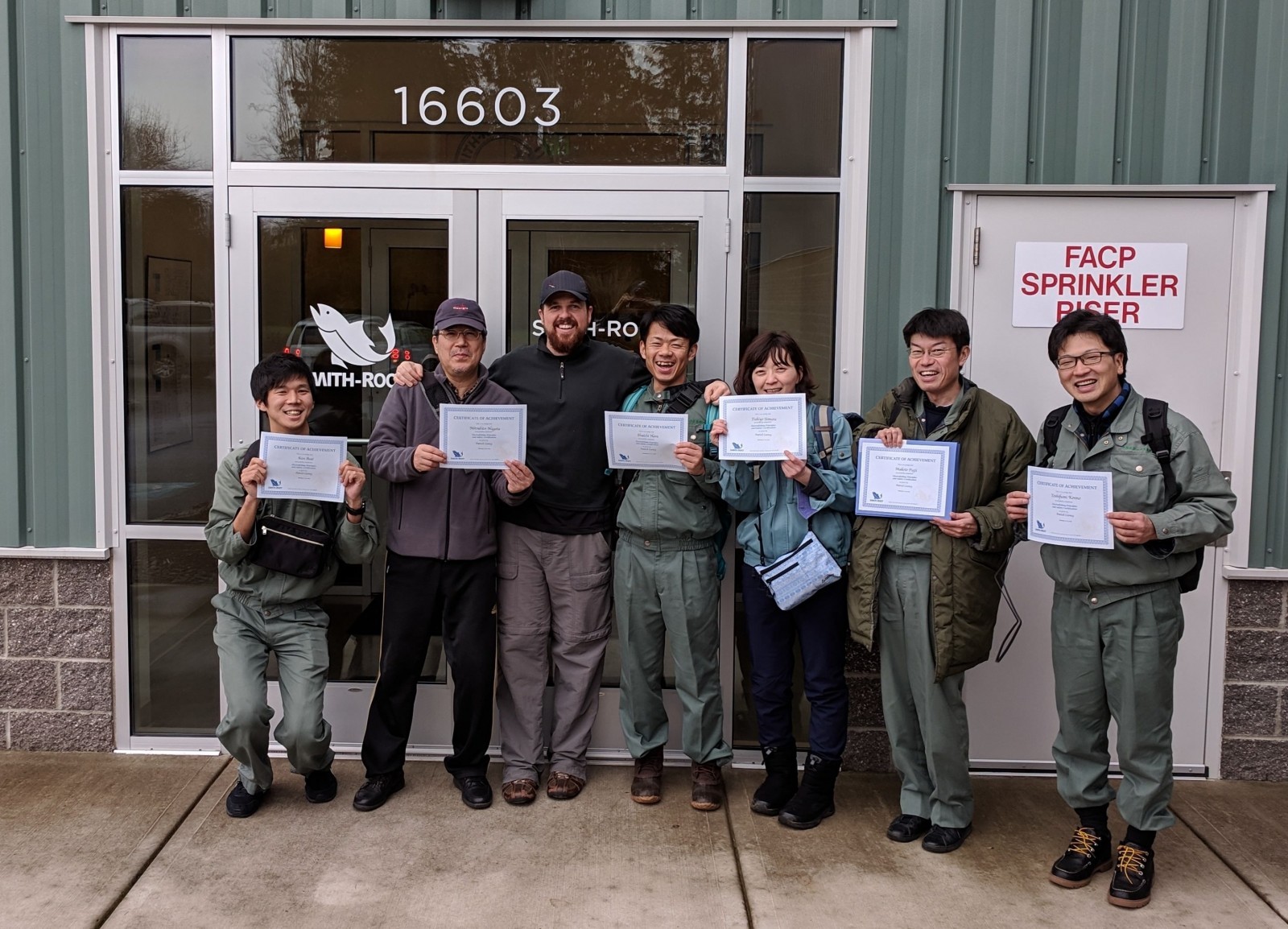Patrick Cooney
Wednesday, February 13, 2019Leading fish scientists and managers from Sapporo, Japan traveled to Smith-Root’s headquarters for a private Electrofishing Certification and Safety Course. Patrick Cooney, Director of Electrofishing Science, worked with a translator to stress the three important aspects of electrofishing: fish health, crew safety, and meeting scientific objectives.
Throughout the class, attendees learned how to adapt their current electrofishing methods that have raised some concerns to incorporate best practice methods for capturing the entire community of fishes found in Hokkaido, the northernmost of Japan’s main islands. Particularly, we stressed methods for the safe capture of Chum Salmon, one of their highest priority species. When capturing Chum Salmon, the fish scientists implant PIT tags, coded wire tags, and telemetry tags to monitor movement during upstream migration. Therefore, we focused heavily on the portions of the certification course that demonstrate proven techniques and electrical settings that minimize stress to fish.
The visiting scientists also expressed interest in environmental DNA (eDNA) research and equipment. In turn, Dr. Austen Thomas, Smith-Root’s eDNA expert, provided a presentation on eDNA and our newly developed Smith-Root eDNA Sampler.

Finally, we headed into the field where they put their newly developed skills and expertise to good use. They were very excited to catch trout, lamprey, sculpin, and stickleback during a mild weather day in the Pacific Northwest.

Feedback on the course was incredibly positive, and they are excited to get home and put their newly learned skills into practice.
If you are interested in attending one of our regularly schedule courses, or if your agency/company is interested in scheduling a private course (our location or yours), please check our website or write us an email and we would be happy to provide details.